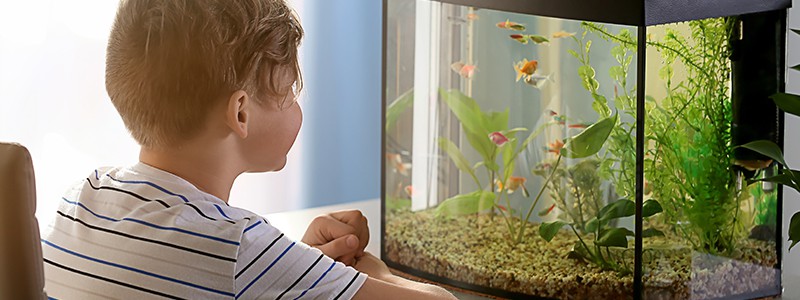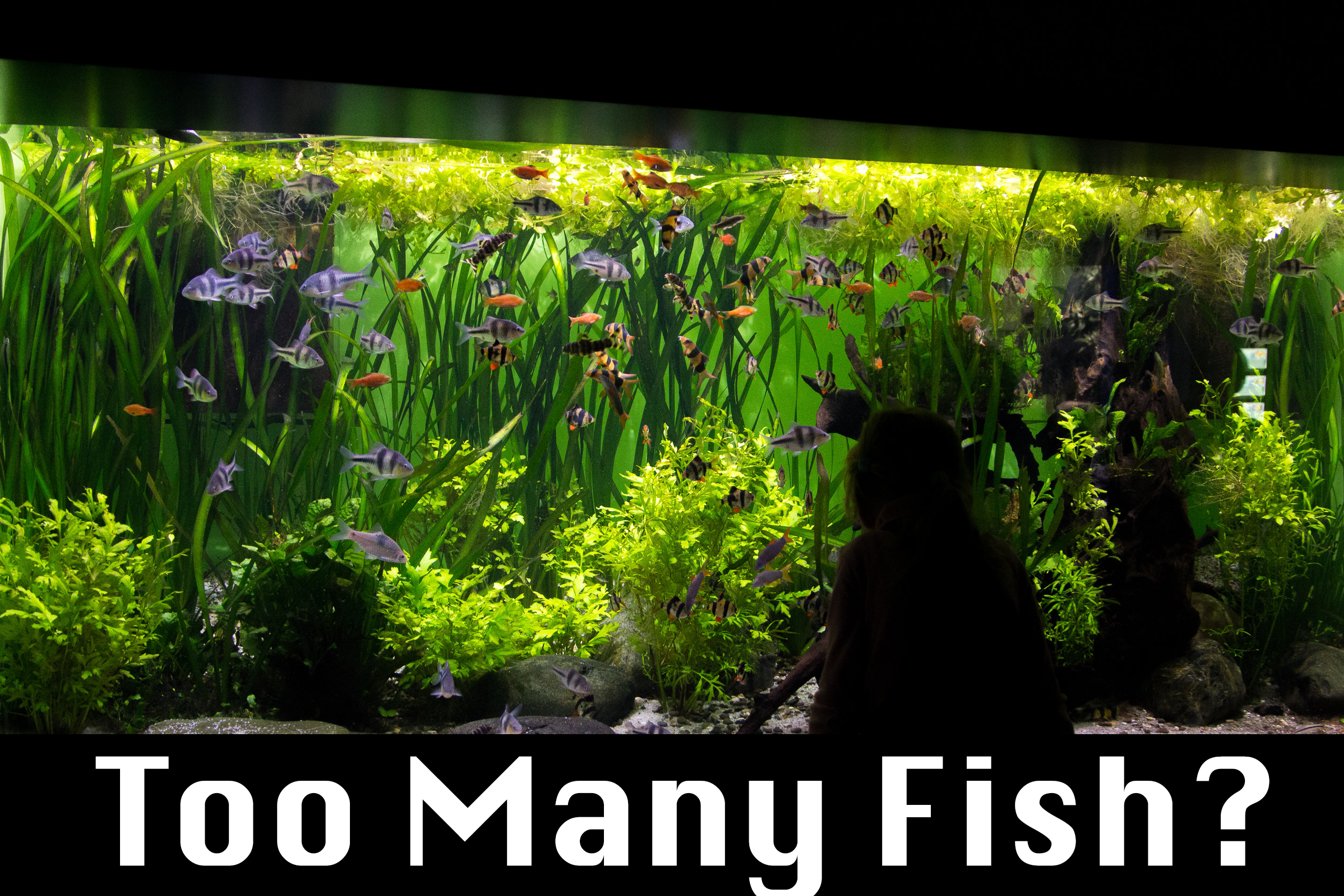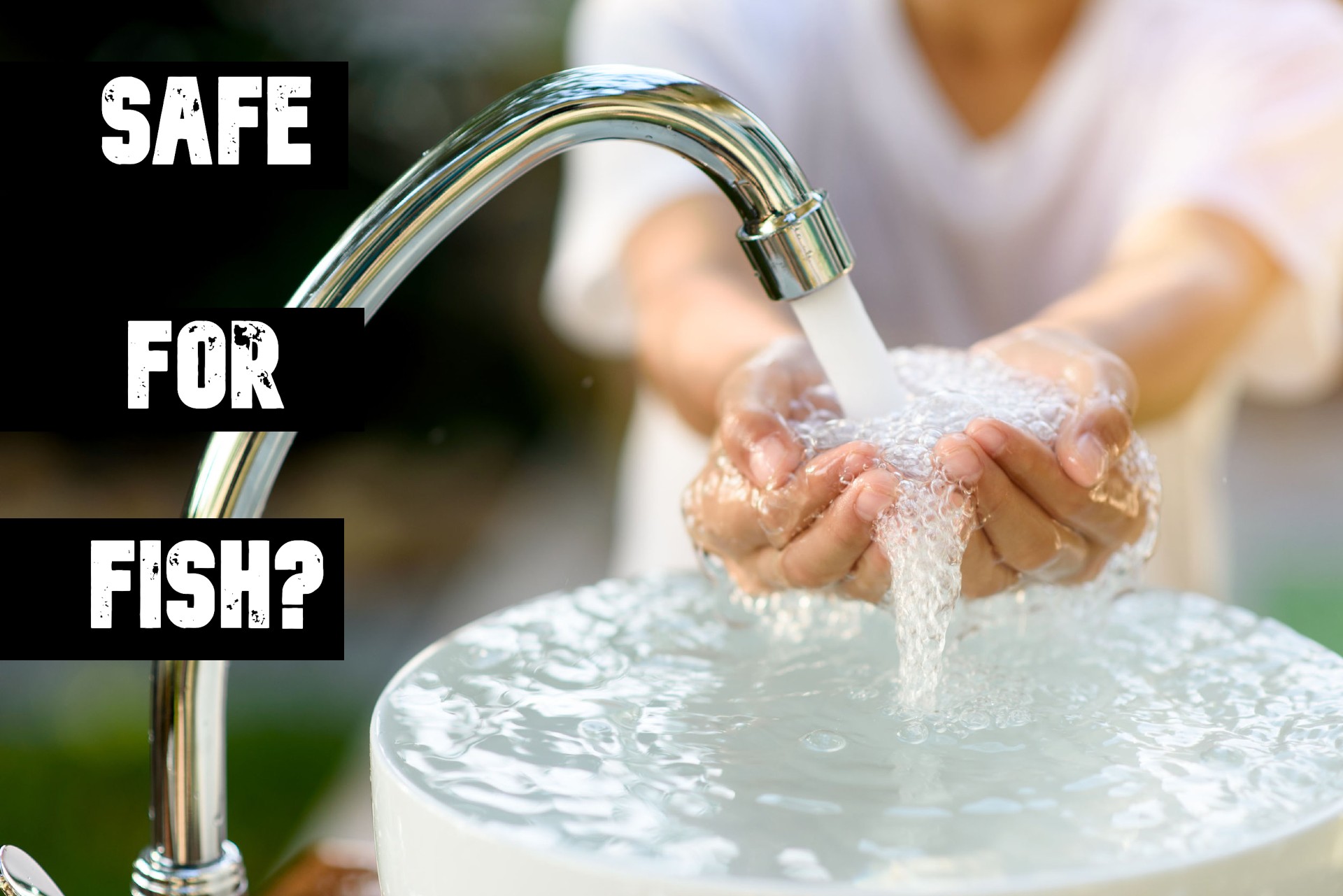A fish quarantine tank sounds pretty dramatic. It sounds like Marine ER. But it’s not as dramatic as it sounds, and is actually a very sensible thing to set up. Doing so could dramatically increase your ability to care for your fish correctly.
On top of that, many people have a permanent quarantine tank available. Although this may sound dramatic, and of course it takes up space, depending on the fish you have, and your ambitions, it may be a necessity.
There are several very good reasons you might wonder what a fish quarantine tank is, and if you need one. So we going to talk about all the reasons you might need to use a fish quarantine tank.
So in this guide to fish quarantine tanks, we’re going to cover all the basics of why you need one, how you set one up, and how to use it when the situation arises.
What Is A Fish Quarantine Tank?
At its most basic, a fish quarantine tank is simply a small tank, usually not as large as the main aquarium, that is separate from the main one you have. Its purpose is to isolate fish for a variety of reasons that we will talk about in a minute.
A fish quarantine tank can be small, and inexpensive to set up and maintain. One of your choices will be whether you have an emergency quarantine tank stored away, or if you have a permanent quarantine tank, often called a permanent quarantine system, that is more involved, but a far better long-term solution.
If you only have a freshwater aquarium, then you might be able to get away without having a quarantine tank at all, or at least only using a temporary one. This is because freshwater fish are less temperamental, and generally more suited to a captive environment. They don’t seem to suffer from the range of diseases that saltwater fish do.
So, firstly, if you are keeping saltwater fish, then the consideration around having a quarantine tank is something that needs to be thought about in much more detail.
Regardless of whether they are saltwater or freshwater fish, the stakes can be high. One new fish with a significant illness, introduced into your main aquarium, could be the catalyst for the death of one or more of your other fish.

Why You Might Need A Quarantine Tank
There are a surprising variety of reasons why you might need to fish from the main tank. In all of these cases, you are taking a sensible precaution against a situation escalating, while you monitor things:
- Parasitic infestation
- Injury
- Fighting and conflict
- Infectious diseases
- Acclimating
- Monitoring
- Breeding
- Regulating/monitoring eating
- Cleaning
- Stress
- Medication
So as you can see, there are lots of reasons why you might want to quarantine your fish in a different tank.
Even if you only ever use it to introduce new fish into the environment, it can still be an effort that produces worthwhile rewards, because you will lose fewer fish.
Sometimes, it pays to put the tank next to the existing aquarium, so that a new fish can safely acclimatize without being exposed to the fish already in the tank.
And of course, having a quarantine tank can also help with cleaning. So many people don’t have a second tank, and experience problems when they need to intervene in the aquarium environment.
Using A Quarantine Tank For Breeding
If you are wanting to breed your fish, then a quarantine tank is going to be essential anyway. So it would make sense to get used to having one and using it as a valuable resource generally.
When it comes to using a separate tank for breeding, some species of fish are so aggressive that they can even kill each other during the process of breeding and giving birth, or attack the fry.
That’s why it makes sense to acclimatize the fish to each other well before trying to introduce them purely for breeding purposes.
The quarantine tank is ideal for this, as they can be positioned close to each other so that the fish can get used to seeing each other and recognizing each other.
Quarantining New Fish
If you wish to introduce a new fish into your aquarium, then quarantining it in another tank can be really good for helping it to thrive. On top of that, it can also help the other fish to acclimatize more easily, minimizing conflict.
Acclimatizing the fish can also consist of getting it used to the sort of environment it will be in, rather than just throwing it straight in at the deep end. Things like water, which you can transfer between your tanks to keep the balance very similar, will help the fish to remain happy when introduced into the main tank.
New fish should really be quarantined for around 21 days, which is enough time to allow them to become thoroughly acclimatized to the environment they will be placed in visually because they should be positioned to see it. They will also be able to see the other fish, and you’ll be able to mimic the environment.
It also allows you a proper chance to observe your new fish and make sure that it’s healthy, behaving normally, and is free from all signs of disease and parasites.

Permanent Quarantine Tank
The serious aquarium owner will usually establish a permanent quarantine system. Even if they don’t do this straight away, the experience will often lead them to establish one, because not only does it make sense for the well-being of the fish, but it’s far easier than having to create one individual situation.
However, obviously, a permanent quarantine tank has certain problems:
- You will need a permanent space to house the tank, preferably within the visibility of the main tank.
- You will also need space elsewhere, in case you have to segregate fish due to fighting or intimidation, because they will have to be out of sight.
- A permanent quarantine system will require it to be constantly functioning in exactly the same way as the main aquarium, so it will require a maintenance schedule.
- Running a permanent quarantine system will also cost you more money. However, the cost after the initial setup is usually quite small, and let’s be honest, money isn’t a huge consideration when weighed up against the health of your prized fish.
Ideally, you will want to create a permanent quarantine tank that mimics the environment of your main aquarium. This means that it will have to have a similar filter, similar water conditions, and possibly similar plants, gravel and other decoration. However, you don’t have to go into the same depth as you have in the main aquarium, representation is fine.
Frequent cycling to keep the tank healthy and minimize algae will also be necessary, you can’t just set it up and leave it until you need it.
Most casual aquarium owners will probably not need a permanent quarantine system. However, if you have a lot of fish, especially saltwater fish, then it’s an investment in time, money, and space that is worthwhile.
Not only will you benefit from the ability to quickly segregate fish, but it will also be more humane, as distressed fish, or fish who are ill, or old, will be able to be put into a less stressful environment without problems.
It’s the same if you acquire new fish as well stop the more you have, the larger the turnover will be, and having a permanent quarantine tank will make integration into the main aquarium far less stressful.
Emergency Quarantine Tank
If you decide that you don’t need to keep a permanent quarantine system in place, then the alternative is to have one stored away for emergency purposes. This is obviously going to be the ideal situation if you are short of space, and time or you don’t have a large number of fish in the tank.
You set the tank up as you need it. This doesn’t create such a stable ecosystem as a permanent quarantine tank, but as long as you set it up slowly so that it can be established, then you can still isolate and deal with problem fish quite quickly.
The trick is to make sure that you partly fill your quarantine tank with water from the main aquarium. Not only does this partly achieve a cycle of the main tank, but it also introduces conditioned water, that will help the fish in the emergency quarantine tank to acclimatize more quickly.
Another great trick is to keep hold of the aquarium filters or cartridges from your main tank. You can do this by surreptitiously hiding them in your main display. Obviously not all the time, but initially, use those cartridges because they will be colonized with the same bacteria that are in the main aquarium, which will make it easier to set up an emergency quarantine tank more quickly.
The other benefit of an emergency tank is that you don’t require any starter fish. Sometimes the nitrogen cycle will have to be maintained using other fish if you have a permanent tank, this is not the case with an emergency system.
One final thing to remember on using an emergency quarantine tank is that you should be careful what you clean it with. Don’t think that because it’s going to be stored for while the you can be more harsh with the chemicals you use. They will dry on the surfaces, and could cause damage to an already weakened fish. Only use a very diluted bleach solution where necessary.
Other Reasons To Use a Quarantine Tank
Interestingly, a lot of people don’t see the benefits of using a quarantine tank for more than quarantining the fish. But having one available can also help with testing and acclimatizing things you wish to introduce into your aquarium.
Let’s say you’ve purchased a significant piece of driftwood. Although it may have been cured, and you may have even given it an extra clean, you can test that it’s not going to leak toxins such as tannins into the water, by placing it in the quarantine tank for a few days.
You will quickly become obvious through observation and testing if the driftwood is still leaking out possibly dangerous substances into the water. Once it has stopped, you can transfer it straight into your main aquarium.

Saltwater Fish Owners Should Have a Quarantine Tank
It could be essential for a freshwater aquarium owner you have a quarantine tank, depending on the number of fish they own, and the type of fish they own.
But it usually turns out to be essential for a saltwater fish owner to have an aquarium tank, which is sometimes also known as a hospital tank, for obvious reasons.
The thing is, saltwater fish are caught wild and are usually more used to being kept in bigger spaces. This means that they can be more stressed and difficult to acclimatize Just chucking them into an aquarium with other fish because trouble for them, and the others.
A very stressed-out fish can quite easily die, and obviously affect others in the tank. On top of that, saltwater fish tend to be more prone to illness when they are stressed, and any medication could cause trouble. Some medication has the ability to kill every fish in the tank if you don’t do things properly.
This does apply to both freshwater and saltwater aquarium owners, but when you introduce new fish to a quarantine tank, you can far more easily observe them and look for any problems. If you have a quarantine tank ready, you can quickly catch them and transfer them, before the problem escalates.
Another important thing to remember if you are a saltwater aquarium owner, who is thinking about setting up a quarantine tank, whether it’s permanent or temporary, is to have spare saltwater always ready for an emergency.
If you freshly mix up saltwater, it won’t be ready for the fish. In fact, fresh saltwater that you create can kill the fish. It needs time to settle. Also, fresh saltwater is more difficult to assess correctly using a hydrometer, so you may get an inaccurate reading, and plunge a fish into their death if you are not careful.
Another reason that saltwater aquarium owner should have a quarantine system in place, is for adding things to the main aquarium, like coral. If you don’t acclimatize things before they go in the main tank, then they can dramatically alter the balance of the aquarium, as well as have the potential to leak out things that can be damaging to the fish.
How To Set-Up A Fish Quarantine Tank
So now we’ve covered the reasons for having a quarantine tank, and discussed whether you should have a permanent one, or an emergency one, let’s take a look at how you can set one up. It’s really not as big a deal as you might think, and certainly the benefits are significant, as you have now seen.
- You don’t need to get a huge tank, definitely not one that matches the size of the main aquarium. This is especially important if you are limited with space. You only need enough room for one or two fish, because that’s usually all you will have to deal with. Also, you won’t have the same amount of decorations, gravel, things like that, to deal with.
- You will still need a good filtration system, and as we’ve already said, one that mimics the main tank, and preferably one that periodically using filters from the main tank, to introduce the same bacteria into your quarantine tank as you have in the main aquarium.
- You will also need heating, and lighting that mimics the main tank. This is especially important if you are moving a problem fish out of the main aquarium. But also, it obviously will make it easier to acclimatize a new fish before it’s introduced into the main tank.
- Monitoring systems should be established that are adequate, and preferably the same as your main aquarium. Cycling water is an important consideration because the fish within the emergency tank is going to require close attention.
- You will have to plan locations for your quarantine tank. You will need space to a position alongside the main aquarium for acclimatization purposes. But you will also need to be able to position it somewhere else, away from things that could affect the fish.
So there you go, setting up a quarantine tank doesn’t have to be that tough. Yes, you will need time and space, and a little money, but it’s not a huge investment for the serious aquarium owner.
Especially if you own saltwater fish, or you want are thinking about expanding the amount of fish you own, then the sooner you begin using a quarantine tank, even if it’s only an emergency one, the better it will be for you as an owner, and your fish.
Related Topics
If you like the article above, here are some other similar articles you should check out!
Why Do Fish Jump Out of the Tank?





